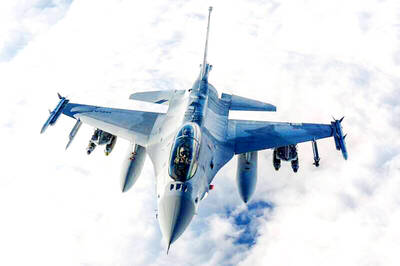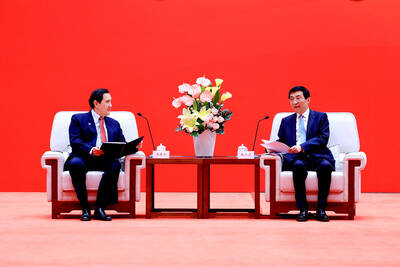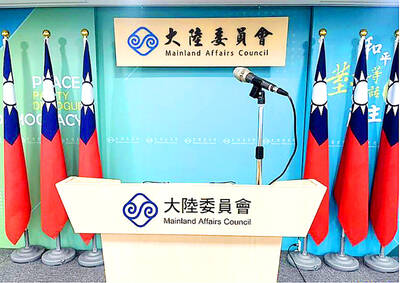A hot air balloon burst into flames and crashed in New Zealand yesterday after hitting a power line, killing all 11 people on board as their families watched on in horror.
The balloon came down in calm weather near Carterton, a small town north of the capital, Wellington, and a popular area for ballooning, in New Zealand’s worst aviation disaster in more than 30 years.
As the balloon was preparing to land, it hit power lines, causing sparks in the basket carrying the pilot and 10 passengers, police inspector Brent Register said.
“At this point, two of the 11 people on board, believed to be a male and a female, appear to have jumped from the basket,” he said.
Register said the balloon then made a sharp ascent, a fire ignited on board and the balloon plummeted into a paddock. There were no survivors.
The passengers were confirmed as five couples from the Wellington region. Family members of some of those on board witnessed the tragedy, as they were on the ground waiting for their loved ones to land, the New Zealand Herald said.
Aurea Hickland, who lives next to the crash site, saw the accident happen as she was having breakfast.
“It was terrible,” she was quoted as saying by the Herald. “I said to my husband: ‘Oh no, the basket’s on fire, the basket’s on fire.’ We saw the two people jump and I said to Neil: ‘They won’t survive.’ It was just awful.”
“It shot up in the air and everyone was screaming — the screaming was just terrible — and then when the canopy went up in flames it just dropped,” she said. “Neil ran out and then came back with two of the family members [waiting for the balloon to land] and one was saying that they had bought the tickets for their parents for Christmas. They just kept saying: ‘How are we going to tell our children?’”
Another witness, David McKinlay, told reporters he looked up to see one side of the basket on fire and “all of a sudden there was just 10m of flames.”
“It was like a rocket coming down; it was just unbelievable,” he said.
McKinlay, who alerted the emergency services, said the balloon was about 150m up when it suddenly plummeted to the ground.
It was New Zealand’s worst aviation disaster since 1979, when an Air New Zealand jet crashed into Mount Erebus in Antarctica killing 257 people.
Police say they were alerted to the crash just before 7:30am. Ballooning companies in Carterton, about 150km north of Wellington, recommend early morning flights.
Reporters at the scene said the crash site had been cordoned off and only emergency workers and the families of those on board the balloon were being allowed through.
The balloon was believed to have been owned by Ballooning New Zealand director Lance Hopping, who has more than 1,000 hours of commercial ballooning experience.
New Zealand Transport Minister Gerry Brownlee said an investigation was under way to determine the cause of the crash and draw up recommendations to prevent a similar accident in future.
Hot air ballooning is tightly regulated in New Zealand and two years ago the civil aviation authority banned one company after “serious safety concerns” were uncovered in safety audits and spot checks.

LONG FLIGHT: The jets would be flown by US pilots, with Taiwanese copilots in the two-seat F-16D variant to help familiarize them with the aircraft, the source said The US is expected to fly 10 Lockheed Martin F-16C/D Block 70/72 jets to Taiwan over the coming months to fulfill a long-awaited order of 66 aircraft, a defense official said yesterday. Word that the first batch of the jets would be delivered soon was welcome news to Taiwan, which has become concerned about delays in the delivery of US arms amid rising military tensions with China. Speaking on condition of anonymity, the official said the initial tranche of the nation’s F-16s are rolling off assembly lines in the US and would be flown under their own power to Taiwan by way

CHIP WAR: The new restrictions are expected to cut off China’s access to Taiwan’s technologies, materials and equipment essential to building AI semiconductors Taiwan has blacklisted Huawei Technologies Co (華為) and Semiconductor Manufacturing International Corp (SMIC, 中芯), dealing another major blow to the two companies spearheading China’s efforts to develop cutting-edge artificial intelligence (AI) chip technologies. The Ministry of Economic Affairs’ International Trade Administration has included Huawei, SMIC and several of their subsidiaries in an update of its so-called strategic high-tech commodities entity list, the latest version on its Web site showed on Saturday. It did not publicly announce the change. Other entities on the list include organizations such as the Taliban and al-Qaeda, as well as companies in China, Iran and elsewhere. Local companies need

CRITICISM: It is generally accepted that the Straits Forum is a CCP ‘united front’ platform, and anyone attending should maintain Taiwan’s dignity, the council said The Mainland Affairs Council (MAC) yesterday said it deeply regrets that former president Ma Ying-jeou (馬英九) echoed the Chinese Communist Party’s (CCP) “one China” principle and “united front” tactics by telling the Straits Forum that Taiwanese yearn for both sides of the Taiwan Strait to move toward “peace” and “integration.” The 17th annual Straits Forum yesterday opened in Xiamen, China, and while the Chinese Nationalist Party’s (KMT) local government heads were absent for the first time in 17 years, Ma attended the forum as “former KMT chairperson” and met with Chinese People’s Political Consultative Conference Chairman Wang Huning (王滬寧). Wang

CROSS-STRAIT: The MAC said it barred the Chinese officials from attending an event, because they failed to provide guarantees that Taiwan would be treated with respect The Mainland Affairs Council (MAC) on Friday night defended its decision to bar Chinese officials and tourism representatives from attending a tourism event in Taipei next month, citing the unsafe conditions for Taiwanese in China. The Taipei International Summer Travel Expo, organized by the Taiwan Tourism Exchange Association, is to run from July 18 to 21. China’s Taiwan Affairs Office spokeswoman Zhu Fenglian (朱鳳蓮) on Friday said that representatives from China’s travel industry were excluded from the expo. The Democratic Progressive Party government is obstructing cross-strait tourism exchange in a vain attempt to ignore the mainstream support for peaceful development